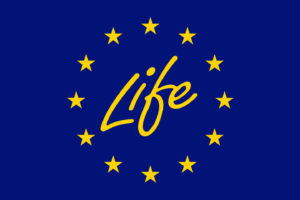The LIFE-AIs project (101074540 — LIFE21-ENV-ES-Life-AIs) is progressing with the presentation of the technology to customers and distributors at Agróptimum‘s plantation, a national leader in pistachio plant production and crop management.
During the event, attendees observed the performance of the AIs system in pistachio cultivation, with the technology adapted to the specific characteristics of this tree species. Following the technology demonstration, customers discussed their production needs as potential users of this solution, information that will help in the implementation of new functionalities in the system.
Recently, Agróptimum joined the LIFE-AIs consortium, funded by the prestigious LIFE Programme of the European Union, led by Pulverizadores Fede. The consortium also includes Agerpix – a provider of digital agronomic services specializing in data processing and predictive models-, and major the producers Castillo de Canena (olive groves) and Dominio Fournier D.O. Ribera de Duero (vineyards) which is part of the González Byass Wine Family.
Results of the AIs system in specialty crop varieties
The AIs system, developed by Pulverizadores Fede, is a comprehensive agronomic solution for specialty crops based on image processing and Artificial Intelligence (AI). AIs, installed on the tractor, can “see” the state and vigour of the crops by capturing images with 3D cameras with a high level of detail and precise temporal resolution.
Based on the visual information regarding the size and condition of the crops, the AIs system, connected to a Smartomizer H3O, performs highl-precision phytosanitary treatments. AIs captures and processes images in real time. The system sends the individualized nozzle opening and closing order to the Fede Smartomizer H3O to adjust the spraying to the crops dimensions of each tree, maintaining constant pressure with uniform distribution and deposition of the treatment.
The results of the trials conducted on different specialty crops demonstrate that the AIs system reduces up to 40% the use of the plant protection products (PPP), with optimal levels of efficacy in pest and disease control.

With the contribution of the European Union’s LIFE Programme, the EU’s funding instrument for the environment and climate action, under grant agreement Project 101074540 — LIFE21-ENV-ES-Life-AIs.
Views and opinions expressed are however those of the author(s) only and do not necessarily reflect those of the European Union or European Climate, Infrastructure and Environment Executive Agency (CINEA). Neither the European Union nor the granting authority can be held responsible for them.

